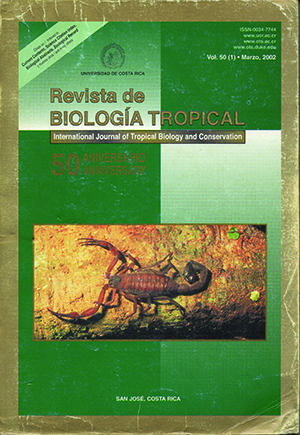Abstract
To compare the general features of Thalassia testudinum seagrass at Mochima Bay with sea urchin (Lytechinus variegatus) abundance and distribution, three T. testudinum seagrass beds were selected, from the mouth (strong wave exposure) to the inner bay (calm waters). Each site was surveyed by using 5 line transects (20 m long) parallel to the coast and 1 m2 quadrats. In situ measurements of T. testudinum cover, shoot and leaf density were taken. Estimation of dry biomass for each seagrass fraction (leaves, rhizomes and roots) and leaf length were obtained from 25 vegetation samples extracted per site using cores (15 cm diameter). A multivariate analysis of variance (Manova) and a less significative difference test (LSD) were performed to examine differences between sites and within sites at different depths. A stepwise multiple regression analysis was done, dependent variable was sea urchin density; independent variables: vegetation values at each site. The only seagrass species found in the three sites was T. testudinum, and cover was 56-100%, leaf density 100-1000 leaf/m2, lengths 6-18.8 cm and shoot density 20-475 shoots/m2. The highest sea urchin densities were found at Isla Redonda and Ensenada Toporo (1-3.6 ind/m2), the lowest at Playa Colorada (0.6-0.8 ind/m2). Significant differences in seagrass features between sites were obtained (Manova p < 0.001), but not between depths (Manova p < 0.320). The regression coefficient between sea urchin density and seagrass parameters was statistically significant (r2 = 0.154, p < 0.007), however, total biomass was the only variable with a significant effect on sea urchin distribution (ß = 0.308, p < 0.032). The other variables did not explain satisfactorily L. variegatus abundance and distribution.Comments

This work is licensed under a Creative Commons Attribution 4.0 International License.
Copyright (c) 2002 Revista de Biología Tropical
Downloads
Download data is not yet available.


